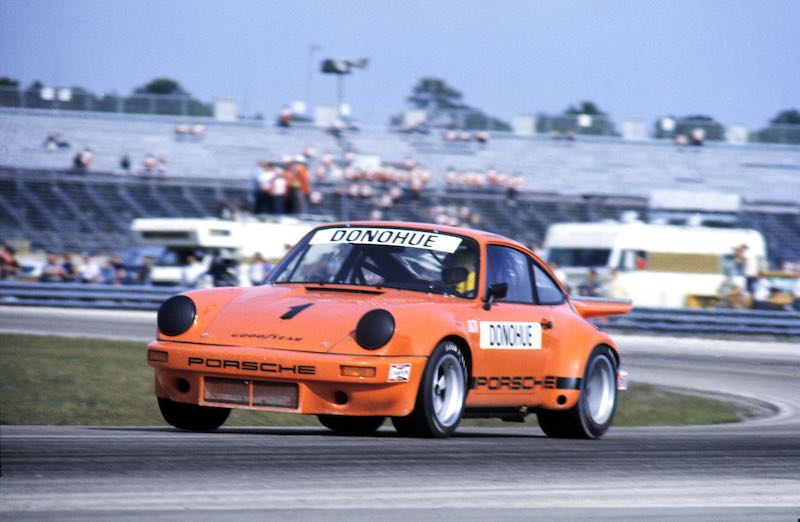It was 45 years ago when the first “made-for-TV” race series pitted the world’s most famous and successful race car drivers from around the globe against one-another in the aptly named International Race of Champions (IROC). With champion drivers coming from sports car racing, Indy car racing, Formula One and NASCAR, the only common element in the inaugural season was the identically matched 1974 Porsche 911 RSR race cars they each drove. The first year was unique in that it was the only time the 911 would be used in the one-make competition. Perhaps, looking back, it was inevitable that Mark Donohue, the man with a panache for road racing and Porsche, would be crowned the inaugural champion with a victory in the season-closing race at Daytona International Speedway on February 14, 1974.
The brainchild of Roger Penske, Les Richter and Mike Phelps, IROC was planned as a four-race season crossing over the winter months between 1973 and 1974. The series would offer “must-see racing TV” with tape-delayed broadcasts on ABC offering fans much-needed motorsports content when all the major series were in their off-seasons. Targeting tracks in warmer-climates, the first three rounds came at Riverside International Raceway in California on October 27-28. Those races were split between former Penske Racing Porsche 917-10 drivers Donohue and George Follmer, the two drivers that would contend for the title as inaugural IROC Champion until the finale at Daytona on Valentine’s Day the following year.
No Subscription? You’re missing out
Get immediate ad-free access to all our premium content.
Get Started



